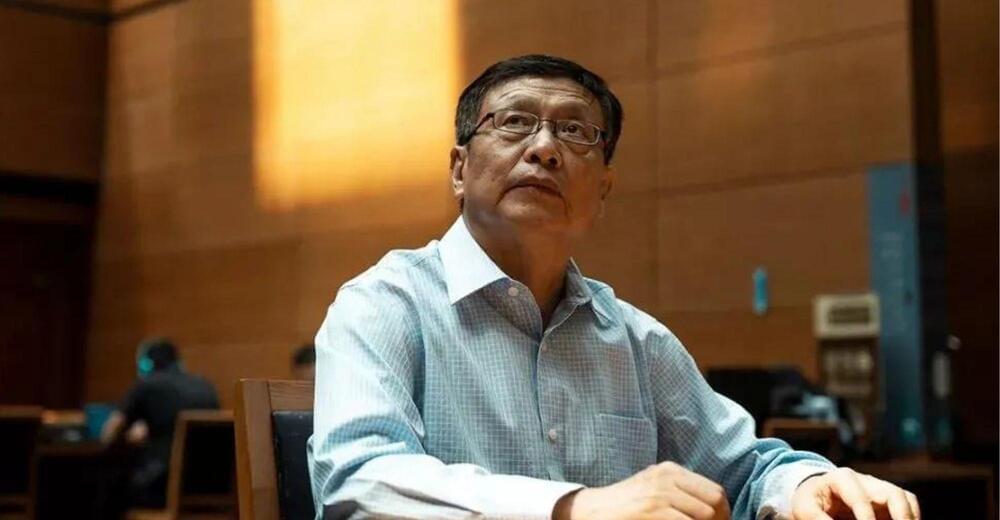Now, an experimental NASA technology designed to cool equipment in space could drastically reduce electric vehicle (EV) charging times to five minutes or less, a NASA blog post reveals.


Deltec Homes is changing the way the world builds. For over five decades, we have designed and engineered homes to fight climate change and withstand the harshest of weather conditions. The connections, both inside and out, that our homes provide make it truly the strongest home for people and our planet.
The engineering and innovation behind each Deltec is why they have stood against some of the most detrimental storms in history including direct hits from Hurricanes Dorian, Michael, Maria, Irma, Harvey, Sandy, Katrina, Hugo, Ivan and Charley.
Please check out this June, 2021, Weather Channel interview of our President, Steve Linton, describing why our homes are hurricane resistant.

This GB Live News is in partnership with VB Lab funded by Xsolla.
Video games have always been resilient, even in an increasingly volatile geopolitical climate. Long-time game players are fiercely loyal, and enthusiastic new gamers keep pouring into the market, says Chris Hewish, president of Xsolla. In the first half of 2022 alone, more than 651 deals were announced or closed, for a value of $107 billion. But in a fiercely competitive market, clouded by less economic certainy, studios and indie developers are exploring an increasing number of ways to reach the audiences.
“Game companies do need to look at how their business models can function in a macroeconomic climate, heading into a recession,” he added. “Capital is going to become tighter. If you have a business model based upon growth over profitability, it’s going to be harder to find fuel for that growth. Readjusting to focus on profitability is probably one of the biggest things game companies can do right now, if they haven’t already, to weather the storm in a macro sense. But the opportunity with players and the number of people playing and spending, that’s still looking good.”
The new system uses molten salts instead of traditional fuel rods.
The world is rethinking nuclear power plants in the face of climate change.
Your average plant produces 8,000 times more power than fossil fuels and is environmentally friendly. There’s one massive caveat, though, in the form of nuclear disasters, such as the 1986 Chernobyl incident and the 2011 Fukushima disaster.

Yitang Zhang, a Chinese-American mathematician, reportedly disclosed in an online salon organized by the Peking University Alumni Association on October 15 that he has proven the longstanding Landau-Siegel zeros theory. This finding is related to the Riemann hypothesis, a formula for the distribution of prime numbers that has remained unsolved for more than a century. However, the claim has not yet been fully verified, and it is reported that a relevant article of more than 100 pages will be sent to a preprint website in early November.
The Landau-Siegel zeros topic has represented one of the most difficult problems in number theory this century. It is a weak form of the Riemann hypothesis, which studies the existence of zeros in the DirichletL-function (a function defined on the whole complex plane). A century of research has shown that the Landau-Siegel zeros can be more difficult to solve than the Riemann hypothesis. Therefore, if Zhang Yitang has really proven that Landau-Siegel zeros exist, the Riemann hypothesis would be wrong. But for now, many people are more inclined to believe that Zhang proved the opposite result.
Regarding the news, a well-known Chinese blogger stated that “if Yitang Zhang proves the existance of Landau-Siegel zeros, then the Riemann conjecture could ‘die.’ Zhang will be the greatest mathematician in the past and future 50 years, no one else.” Others commented, “If Zhang can prove Landau-Siegel zeros, the probability can be equivalent to a person being struck by lightning twice.”

Do we need a new criteria for death, that covers the technicalities around neuro preservation, issues of legal identity upon reanimation and an approach to rehabilitation? What are the misunderstandings or misinformation that surround transhumanism and endeavour to make the distinction between transhumanism and technocracy? Should we be worried about the wrong headedness of The Population Bomb, climate catastrophism and the fashionability of long termism?
Today, I speak with Max More. As some of you may already know, Max is considered to be the founder of modern transhumanism, a philosopher and futurist who writes extensively on technology and humanity. He’s also currently ambassador and President Emeritus at Alcor Life Extension Foundation, having served almost 10 years as President and CEO there, and having been its 67th member. His 1995 University of Southern California doctoral dissertation, ‘The diachronic self identity continuity and transformation’, examined several issues that concern transhumanists, including the nature of death. He is the Co-editor of Rhe Transhumanist Reader, and he’s written many articles on transhumanism and extropianism, including the 1990 essay, ‘Transhumanism: toward a futurist philosophy’, in which he introduced the term transhumanism, in its modern sense.
This episode of The Future of You covers:

Devising renewable sources of energy is a key concern for scientists, political leaders and communities as the world comes to terms with the realities of climate change and the limits of the Earth’s natural resources. In an exciting new development, scientists from the Institute of Scientific and Industrial Research (SANKEN) at Osaka University have demonstrated that electricity may be obtainable from water with a high salt concentration, such as seawater.
Some people think about “osmosis” as just a science term they were forced to learn in elementary school biology class. However, the spontaneous motion of dissolved ions or molecules through a semi-permeable membrane when there is a concentration difference between the two sides can be harnessed to generate electricity. And luckily for us, the oceans are filled with salty water, which may be used to help alleviate humanity’s ever-growing demand for energy. However, in order to be practical, this membrane needs to be very thin and highly selective to allow ions—but not water molecules—to pass through.
Now, a research team led by Osaka University has used conventional semiconductor processing technology to precisely control the structure and arrangement of nanopores in an ultrathin silicon membrane. Because these fabrication methods have been around for decades, the costs and design complexities were minimized. Moreover, the size and location of the pores could be precisely controlled.

Inspired by insects, robotic engineers are creating machines that could aid in search and rescue, pollinate plants and sniff out gas leaks.
Cyborg cockroaches that find earthquake survivors. A “robofly” that sniffs out gas leaks. Flying lightning bugs that pollinate farms in space.
These aren’t just buzzy ideas, they’re becoming reality.
Robotic engineers are scouring the insect world for inspiration. Some are strapping 3D-printed sensors onto live Madagascar hissing cockroaches, while others are creating fully robotic bugs inspired by the ways insects move and fly.
Robotic engineers are scouring the insect world for inspiration, and creating machines that could be used for emergency response, farming and energy.

BABCOCK RANCH, Fla. — Like many others in Southwest Florida, Mark Wilkerson seemingly gambled his life by choosing to shelter at home rather than evacuate when Hurricane Ian crashed ashore last week as a Category 4 storm.
But it wasn’t just luck that saved Wilkerson and his wife, Rhonda, or prevented damage to their well-appointed one-story house. You might say that it was all by design.
…and yes it’s 30 miles inland, as that’s part of the design, with many more innovations.
Hundreds of thousands of people in Southwest Florida still don’t have electricity or water. But Babcock Ranch, north of Fort Myers, was designed and built to withstand the most powerful storms.

What we know about Venus so far has been gathered from several past probes.
With a slightly smaller diameter than Earth, Venus orbits closer to the Sun. This means that any water on the surface would have evaporated shortly after its formation, starting its greenhouse effect. Early and sustained volcanic eruptions created lava plains and increased the carbon dioxide in the atmosphere — starting the runaway greenhouse effect, which increased the temperature from just a little higher than Earth’s to its current high value of 475°C.
While Venus’s year is shorter than ours (225 days), its rotation is very slow (243 days) and “retrograde” — the other way round to Earth. The slow rotation is related to a lack of magnetic field, resulting in a continuing loss of atmosphere. Venus’ atmosphere “super-rotates” faster than the planet itself. Images from many missions show V-shaped patterns of clouds composed of sulphuric acid droplets.
Despite the harsh conditions, some scientists have speculated that Venus’ clouds might, at some altitudes, harbor habitable conditions. Recent measurements showing phosphine — a potential sign of life as it is continuously produced by microbes on Earth — in Venus’ clouds have been strongly debated. We need more measurements and exploration to work out where it comes from.